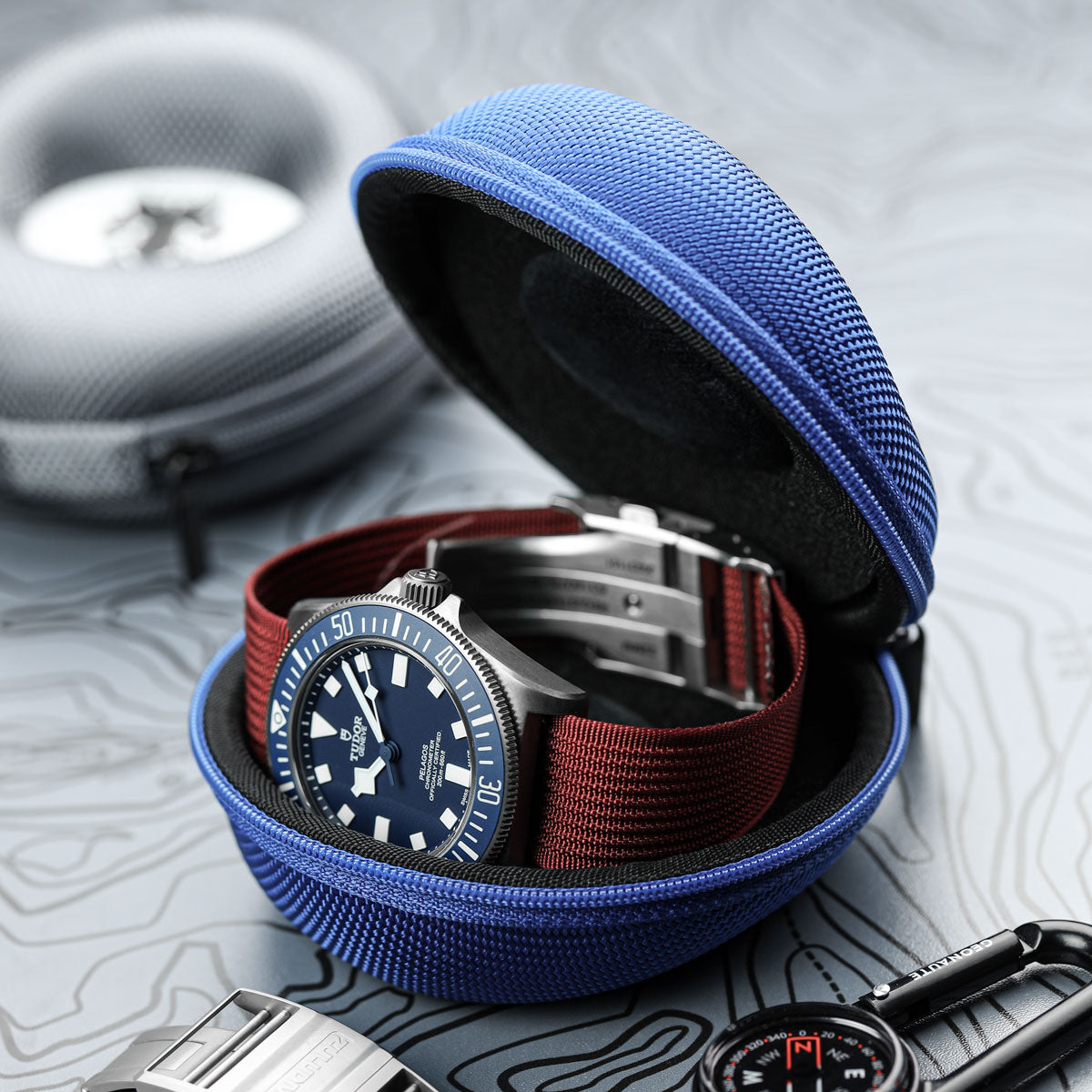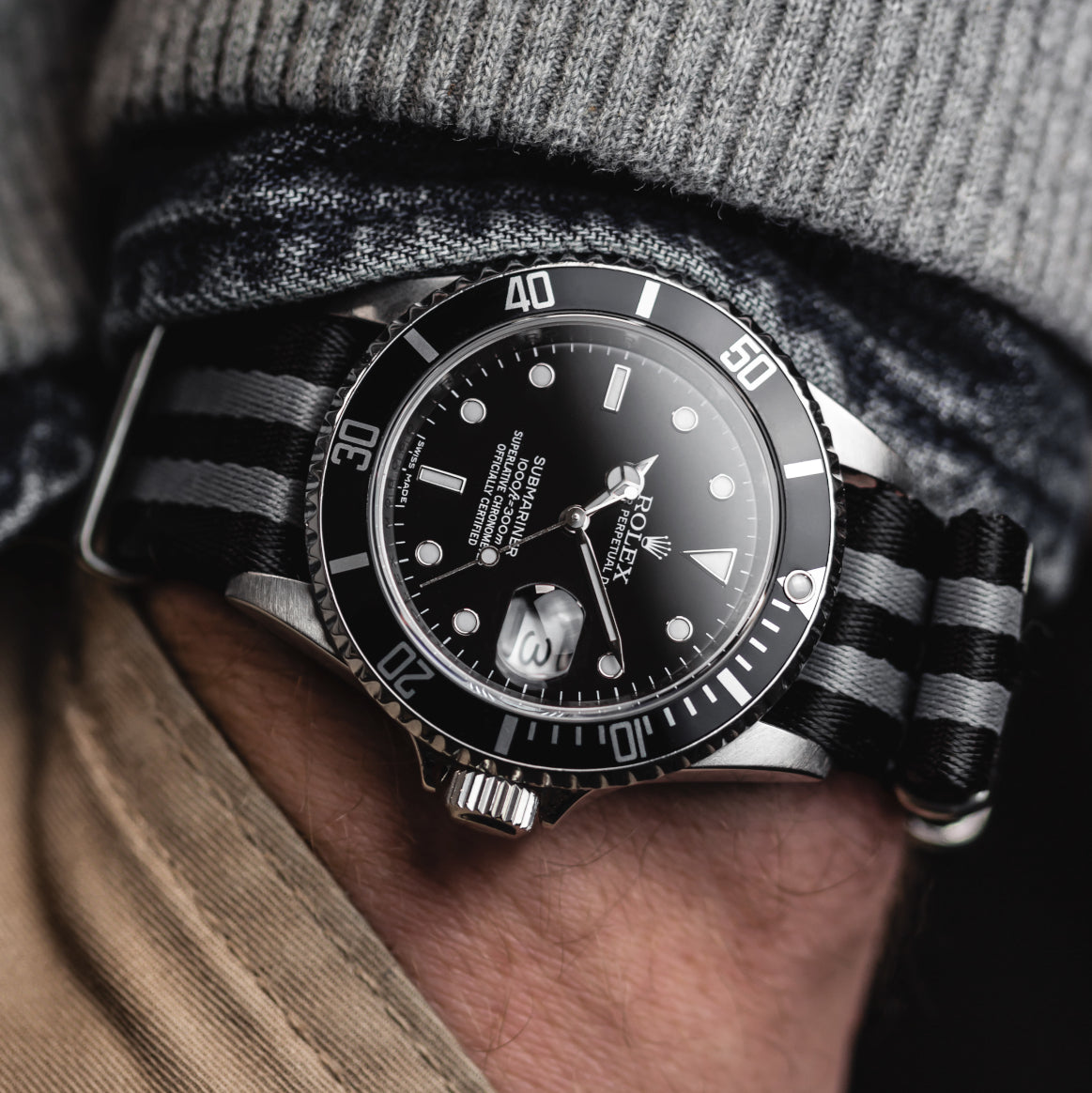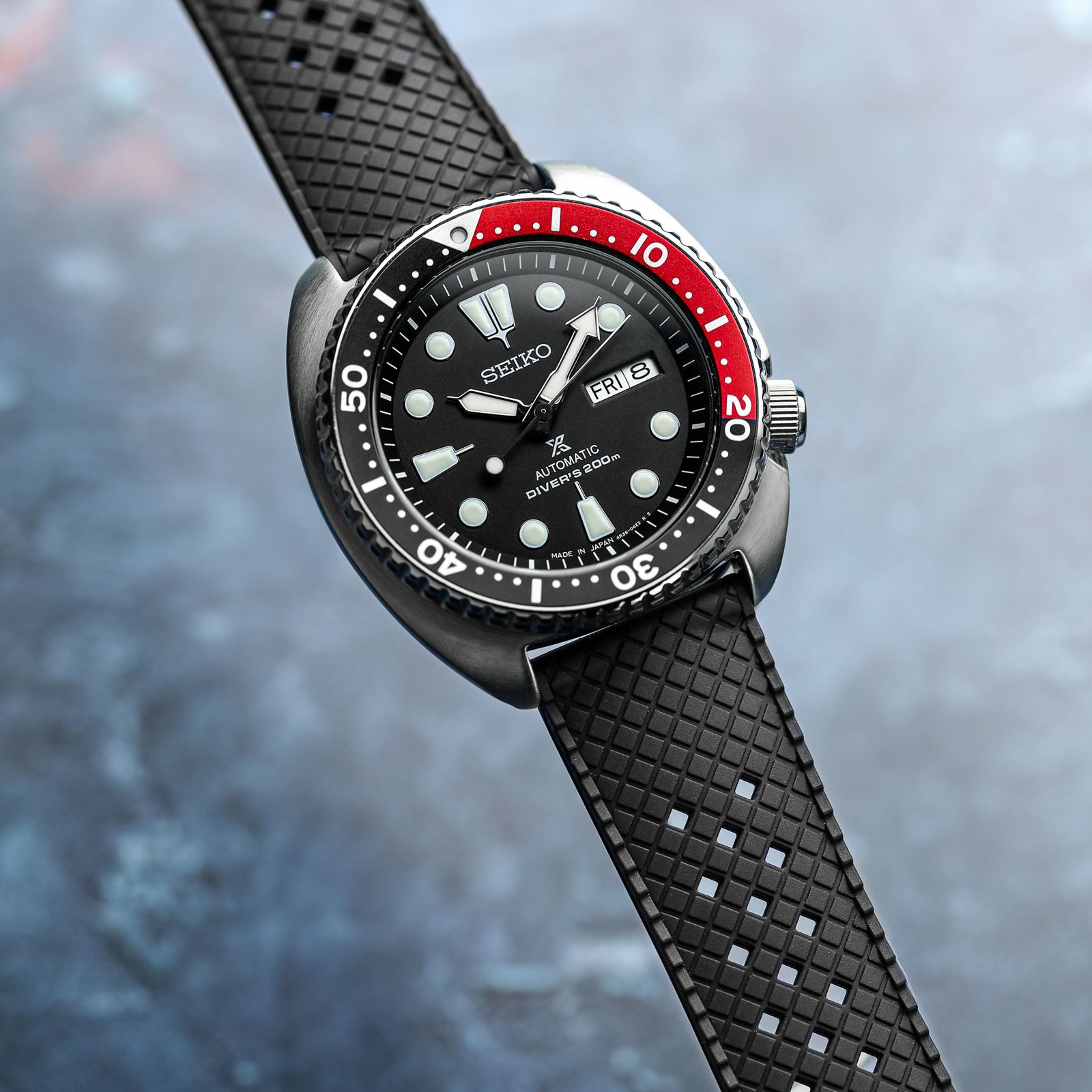Your Cart is Empty
NEW! FREE SHIPPING TO THE UK, GERMANY, FRANCE & MORE!
NEW! FREE SHIPPING TO THE UK, GERMANY, FRANCE & MORE!

A Different Adventure, A Different Watch!

Categories
September 11, 2023
Many people have just one watch!
Indeed, for 18 years my Rolex Ref.16600 Sea-Dweller 4000 accompanied me on every single adventure, above and below the waves in more than 20 countries. So why do I have 9 watches in my current collection? There's a simple answer to that! Different watches have different functions, and as such, are better suited to different adventures, but it took me quite a while to admit to myself that this was actually the case; after all, you can't beat a Sea Dweller, can you? A watch can give you so much more than just the time of day, so it makes perfect sense to choose a watch that best suits your needs for that particular trip. There seems little point in dragging a chunky 1220m dive watch around when on a land-based adventure? Similarly, you wouldn't venture below the waves in a GMT with a bi-directional 24 hour bezel, even if it had a depth rating of 300m! All my watches have an absolute minimum depth rating of 200m and sport a screw-down crown. This gives me peace of mind, whatever I may get up to, or indeed, into. So! What's on the cards for this particular outing?

Lizard, Cornwall - Credit Guest Author
The Lost Fortune of Captain Henry Avery
Last October, explorer Josh Gates and Discovery channel's 'Expedition Unknown' team came over to film our progress in the quest to locate Avery's lost fortune. All this took place in the frigid waters off Cornwall's Lizard peninsula. The watch that I chose on that occasion was the HELM Vanuatu and, as expected, it performed impeccably, taking everything in its stride. That trip was all about diving, but this trip is a little different. Some of the treasure was reputedly taken ashore and hidden, and it's this part of the story that needs to be investigated further. The Henry Avery story is quite well documented, to a point, and then it gets a little sketchy, but that's about par for the course in this game! Nothing of the land treasure has ever been found, but further research has uncovered some additional information, and when considered as a whole it reveals a location that's backed-up on modern mapping systems. This is all that's needed to instigate a physical investigation of the area in order to see if there's likely to be anything in it or not. Oh yes, I forgot to mention that his haul in today's money is around $100,000,000, although not all of this will have made it back to Cornwall. Nevertheless, if found it should keep us in Cornish pasties and cream teas for a week or two.

Lizard, Cornwall - Credit Guest Author
So What's the Problem?
Nothing is straight forward, and this particular one is less straight forward than most. From land, it would involve a 100ft abseil into water, with an equally fraught climb/prusik back up again. From the sea, it would involve a longish swim of around 2km, towing dry-bags containing all the equipment; this swim would also have to be undertaken on the way out again. An additional problem with the land approach is that someone has to stay with the rope anchors, as it's very close to the coast path and we're likely to be down there for quite a few hours. Just to put the tin hat on it, so to speak, one of the markers can only be seen at low tide, and without that we're scuppered (no pun intended). With all this in mind, what sort of watch would I take with me? It would need to cover both scenarios, or indeed, a mixture of the two. Obviously, the watch needs to be perfectly at home in water; it also needs to be light and unobtrusive on the wrist. Hardcore diving watches tend to have a certain amount of bulk, often sitting higher off the wrist; this feature is undesirable when climbing, handling ropes, scrambling over barnacle-covered rocks, putting on and taking off gear, including heavy rucksacks is also a consideration. One watch in my collection seems to fit the requirements perfectly, but which one?
 Casio on Don Russell's Wrist - Credit GuestAuthor
Casio on Don Russell's Wrist - Credit GuestAuthor
The Casio G-Shock GW3500B-1 AER
This is my only watch without a screw-down crown, and that's because it doesn't have a crown! I bought this watch in 2016 for a security job in South America and boy, does it deliver! If you were limited to owning just one watch, this would have to be a serious contender. A quick, but not exhaustive rundown of what it offers. 200M WR, World-Time, Stop Watch, Countdown Timer, multiple Alarms, 3 Time-Zone View, Solar, Multi-Band 6, Analogue/Digital DST, UTC, Day, Date, Month, Running Seconds, Hand Position Monitoring, Hand Alignment Monitoring, Charge Indicator, Instant Time-Zone Hand-Swap, Luminescent, Integrated Light, Tough Mineral Crystal... I'm getting bored now, but I'm sure you've got the picture.
The GW3500B-1 AER is not a small watch at almost 50mm across and around 15,5mm in thickness, but it wears nothing like that! How can this be? I really don't know, but it nestles down, follows your wrist profile and stays well out of the way! The domed mineral crystal sits below the outer case, giving it a generous amount of protection. The four 'pushers' are recessed and very well protected, but even so, surprisingly easy to operate. I could carry on with this almost indefinitely; however, we now have to cover the negative side! The Casio strap works extremely well, but has a unique attachment. This means that after market straps cannot be fitted, and although I've searched, I can't find any adaptors that will allow this. My watch still has the original strap and it's still 100%, even after what I've put it through, and the same goes for the watch itself.
 Lizard, Cornwall - Credit Guest Author
Lizard, Cornwall - Credit Guest Author
It's Time!
All the gear has been checked, and double checked; it's 3am and everything is loaded into the car. The 350 miles takes the usual 61/2 hours or so, including a short 'comfort' stop. We unpack all the gear and settle in to our secluded accommodation. The following day we take a hike along the coast path to check out the location and make a final decision; the weather looks favourable for the next few days and we decide on a land assault, although this will undoubtedly result in getting absolutely soaked at some point. After covering every nook and cranny, a new option presents itself in the form of a semi-recent landslide 100m or so up the coast; it looked a little fraught, but doable. It was well off the path and out of site; this means that we could leave the ropes etc. in place and both descend. There's also a good chunk of rock that will take some anchors in order to secure the rope.
That night, all the required equipment including waterproof head torches, British army entrenching tool, Garrett Pro-Pointer, Nokta Makro submersible pulse induction metal detector, ropes, harnesses, climbing hardware, small 'jemmy' bar, along with all the usual stuff, was packed into two 45 litre rucksacks. A flask, packed lunch, 2 litres of water, a towel and two 10 litre watertight rolltop 'ditch bags' completed the ensemble. Low water was at 11am the following morning and we needed to be down at the sea cave 1 hour before. Allowing for a 1 hour hike-in and an hour to rig and descend meant a leisurely 8am start. We arrived a few minutes ahead of schedule and got everything set up. We transferred everything that we needed into the two waterproof ditch bags and then made our descent over steep, loose terrain one at a time. Although not as safe as the more vertical route on rock, it would be easier when ascending. At the bottom we made our way over rocks and through knee-deep pools to the area that we'd worked out. It was still around 50 minutes to low water and we didn't really know what we were looking for. One thing that we noticed was a rock protruding from the water, but very little else stood out. We sat and had a hot drink from the flask, waiting for low water.
 Lizard, Cornwall - Credit Guest Author
Lizard, Cornwall - Credit Guest Author
A quick look at the Casio's dial confirmed that low water was still a few minutes away. Julie noticed another rock starting to break the surface further out, but could this be the marker that we were looking for? Indeed, the water level is reputed to be around 300mm higher now than it would have been in Avery's day, and that rock would have been more prominent then. We took a guess and moved along the bottom of the cliff face until the two rocks aligned. Behind us was the small sea cave; could this be the place? Certainly, all the clues brought us to this spot and the small, sandy area in front of the cave was the final piece in the puzzle; It was mentioned in one of the letters. Well, I'm limited to 1500 words or so, but there's much more to this story

About the Author: Don Russell
About the Author: Don Russell
The timepiece of an adventurer serves not only as a trusted companion, but also as a portal to their inner self. My interest in watches goes back more than half a century; my reliance and passion more than half of that time. My hope is that I may inspire others to use their timepiece on their own adventures so that they may share a passion that has enriched my own life and given me so much enjoyment.
More Articles by Don Russell


















